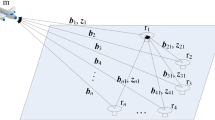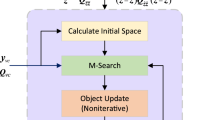Abstract
Reliable and correct carrier phase ambiguity resolution is the key to global navigation satellite system (GNSS) high-precision navigation and positioning applications. For kinematic situations, such as moving-baseline-based positioning and attitude determination, the baseline length between two antennas is constant; such a priori information could contribute to integer ambiguity resolution, especially when only a few satellites are viewed. In this research, three different approaches using baseline information—the linearized joint adjustment method, validation method, and constrained LAMBDA (CLAMBDA) method—are comprehensively evaluated through theoretical and experimental analyses. The performance of each method is assessed in terms of the ambiguity success rate and baseline solution accuracy with static and kinematic GPS/BDS datasets. The additional baseline length constraint improves the precision of the float solution and the ambiguity fixed success rate (compared to the standard LAMBDA method), but there are differences in the performance of the three methods. Specifically, the performance of the linearized joint adjustment method primarily depends on baseline length and improves as the baseline length increases; however, caution should be exercised for short baselines. The validation method and CLAMBDA method both consider the quadratic form of ambiguity residuals and baseline length constraint for selecting the ambiguity solution. However, the validation method directly judges the ambiguity to obtain a locally optimal solution, whereas the CLAMBDA method constructs a rigorous mathematical formula to obtain a globally optimal solution. Moreover, because the linearized joint adjustment method and CLAMBDA method primarily contribute to the float and fixed solution, respectively, we fused the two methods to improve the ambiguity resolution success rate. The results confirm that the combined algorithm achieves better performance that exceeds that of either individual method for a baseline length of tens of meters.








Similar content being viewed by others
Data availability
The data used in this manuscript are available from the corresponding author upon request.
References
Buist PJ (2007) The baseline constrained LAMBDA method for single epoch, single frequency attitude determination applications. In: Proceedings of ION GNSS 2007, Institute of Navigation, Fort Worth, TX, September 2007, pp 2962–2973
Chen W, Qin H (2012) New method for single epoch, single frequency land vehicle attitude determination using low-end GPS receiver. GPS Solut 16(3):329–338
Dai L, Hu GR, Ling KV, Nagarajan N (2004) Real-time attitude determination for microsatellite by Lambda method combined with Kalman filtering. In: 22nd AIAA international communications satellite systems conference and exhibit 2004 (ICSSC)
Euler HJ, Schaffrin B (1990) On a measure for the discernibility between different ambiguity solutions in the static-kinematic GPS-mode. In: Proceedings of the international association of geodesy symposia, Banff, AB, Canada, pp 285–295
Giorgi G, Teunissen PJG, Verhagen S, Buist PJ (2012) Instantaneous ambiguity resolution in global-navigation-satellite-system-based attitude determination applications: a multivariate constrained approach. J Guid Control Dyn 35(1):51–67
Han S, Rizos C (1999) Single-epoch ambiguity resolution for real-time gps attitude determination with the aid of one-dimensional optical fiber gyro. GPS Solut 3(1):5–12
Li B, Shen Y (2009) Fast GPS ambiguity resolution constraint to available conditions. Geomat Inf Sci Wuhan Univ 34(1):117–121
Li X, Ge M, Dai X, Ren X, Mathias F, Jens W, Harald H (2015) Accuracy and reliability of multi-GNSS real-time precise positioning: GPS, GLONASS, BeiDou, and Galileo. J Geod 89(6):607–635
Li Z, Liu W, Lou Y, Zhou Z (2007) Heading determination algorithm with single epoch dual-frequency GPS data. Geomat Inf Sci Wuhan Univ 32(9):753–756
Lorenzo DSD, Alban S, Gautier J, Enge P (2004) GPS attitude determination for a JPALS testbed: integer initialization and testing. In: Proceedings of position location and navigation symposium PLANS 2004, pp 762–770
Lu L, Ma L, Wu T, Chen X (2019) Performance analysis of positioning solution using low-cost single-frequency u-blox receiver based on baseline length constraint. Sensors 19(19):4352
Monikes R, Wendel J, Trommer GF (2005) A modified LAMBDA method for ambiguity resolution in the presence of position domain constraints. Eur J Gastroenterol Hepatol 13(7):791–801
Montenbruck O et al (2017) The multi-GNSS experiment (MGEX) of the international GNSS service (IGS)—achievements, prospects and challenges. Adv Space Res 59(7):1671–1697
Nie Z, Wang Z, Ou J, Ji S (2015) On the effect of linearization and approximation of nonlinear baseline length constraint for ambiguity resolution. Acta Geod Cartogr Sin 44(2):168–173
Odijk D, Teunissen PJG (2008) ADOP in closed form for a hierarchy of multi-frequency single-baseline GNSS models. J Geod 82(8):473–492
Park C, Teunissen PJG (2003) A new carrier phase ambiguity estimation for GNSS attitude determination systems. In: Proceedings of international GPS/GNSS symposium. Tokyo, pp 283–290
Tang W, Li D, Chi F (2013) Research on single epoch orientation algorithm of BeiDou navigation satellite system. Geomat Inf Sci Wuhan Univ 09:9–12
Teunissen PJG (1993) Least-squares estimation of the integer GPS ambiguities. Invited lecture, section IV theory and methodology, IAG general meeting, Beijing, China, p 16 (also in: LGR series No6, Delft Geodetic Computing Center, Delft University of Technology)
Teunissen PJG (1995) The least-squares ambiguity decorrelation adjustment: a method for fast GPS integer ambiguity estimation. J Geod 70(1–2):65–82
Teunissen PJG (1997) A canonical theory for short GPS baselines. Part IV: precision versus reliability. J Geod 71:513–525
Teunissen PJG (1999) An optimality property of the integer least-square estimator. J Geod 73(11):587–593
Teunissen PJG (2006) The LAMBDA method for the GNSS compass. Artif Satell 41(3):89–103
Teunissen PJG, Verhagen S (2009) GNSS carrier phase ambiguity resolution: challenges and open problems. In: Observing our changing earth. Springer, Berlin, pp 785–792
Teunissen PJG (2010) Integer least-squares theory for the GNSS compass. J Geod 84(7):433–447
Teunissen PJG, Giorgi G, Buist PJ (2011) Testing of a new single-frequency GNSS carrier phase attitude determination method: land, ship and aircraft experiments. GPS Solut 15(1):15–28
Teunissen PJG (2012a) A-PPP: array-aided precise point positioning with global navigation satellite systems. IEEE Trans Signal Process 60(6):2870–2881
Teunissen PJG (2012b) The affine constrained GNSS attitude model and its multivariate integer least-squares solution. J Geod 86(7):547–563
Tiberius CC, De Jonge PJ (1995) Fast positioning using the LAMBDA method. In: Proceedings of the international symposium on differential satellite navigation systems, Bergen, Norway, pp 24–28
Verhagen S, Teunissen PJG (2013) The ratio test for future GNSS ambiguity resolution. GPS Solut 4:1–14
Wang B, Miao L, Wang S, Shen J (2009) A constrained LAMBDA method for GPS attitude determination. GPS Solut 13(2):97–107
Wang L, Verhagen S (2015) A new ambiguity acceptance test threshold determination method with controllable failure rate. J Geod 89(4):361–375
Wu S, Zhao X, Pang C, Zhang L, Xu Z, Zou K (2020) Improving ambiguity resolution success rate in the joint solution of GNSS-based attitude determination and relative positioning with multivariate constraints. GPS Solut. https://doi.org/10.1007/s10291-019-0943-y
Xu PL, Cannon E, Lachapelle G (1995) Mixed integer programming for the resolution of GPS carrier phase ambiguities. In IUGG95 Assembly, Boulder, July 2–14. arXiv preprint https://arxiv.org/abs/1010.1052
Acknowledgements
This study was supported by the National Natural Science Foundation of China (Grant Nos. 41804020, 41774031 and 42061077), the National Science Fund for Distinguished Young Scholars (Grant No. 41825009), the Natural Science Foundation of Jiangxi Province (Grant No. 20202BAB212010), the Hubei Technological Innovation Special Fund (Grant No. 2019AAA043), and the National Postdoctoral Program for Innovative Talents (BX20200249).
Author information
Authors and Affiliations
Corresponding author
Additional information
Publisher's Note
Springer Nature remains neutral with regard to jurisdictional claims in published maps and institutional affiliations.
Appendix: Proof of (14)
Appendix: Proof of (14)
For \({\varvec{A}} = \left[ {\begin{array}{*{20}c} {\lambda {\varvec{I}}_{n} } & {{\varvec{0}}_{n} } \\ \end{array} } \right]^{{\text{T}}}\), \({\varvec{B}} = \left[ {\begin{array}{*{20}c} {{\varvec{G}}_{n}^{{\text{T}}} } & {{\varvec{G}}_{n}^{{\text{T}}} } \\ \end{array} } \right]^{{\text{T}}}\), \({\varvec{C}} = {\varvec{C}}_{1}\), and \({\varvec{P}}_{{{\varvec{yycc}}}} = {\text{diag}}\left( {{{{\varvec{P}}_{n} } \mathord{\left/ {\vphantom {{{\varvec{P}}_{n} } {\delta_{\phi }^{2} }}} \right. \kern-\nulldelimiterspace} {\delta_{\phi }^{2} }},{{{\varvec{P}}_{n} } \mathord{\left/ {\vphantom {{{\varvec{P}}_{n} } {\delta_{{\text{P}}}^{2} }}} \right. \kern-\nulldelimiterspace} {\delta_{{\text{P}}}^{2} }},{{{\varvec{P}}_{1} } \mathord{\left/ {\vphantom {{{\varvec{P}}_{1} } {\delta_{c}^{2} }}} \right. \kern-\nulldelimiterspace} {\delta_{c}^{2} }}} \right)\), \(\delta_{c}^{2}\) is the variance of the observed baseline length constraint and \({\varvec{P}}_{1}\) is the unit weight of order 1 in
According to (13), we obtain:
Using the matrix reversing formula \(\left( {{\varvec{D}}{ + }{\varvec{ACB}}} \right)^{ - 1} = {\varvec{D}}^{ - 1} - {\varvec{D}}^{ - 1} {\varvec{A}}\left( {{\varvec{C}}^{ - 1} + {\varvec{BD}}^{ - 1} {\varvec{A}}} \right)^{ - 1} {\varvec{BD}}^{ - 1}\), Eq. (25) can be expressed as:
Equation (26) presents the precision of the float ambiguity. Similarly, we obtain:
Equation (27) presents the precision of the float baseline.
Rights and permissions
About this article
Cite this article
Ma, L., Lu, L., Zhu, F. et al. Baseline length constraint approaches for enhancing GNSS ambiguity resolution: comparative study. GPS Solut 25, 40 (2021). https://doi.org/10.1007/s10291-020-01071-1
Received:
Accepted:
Published:
DOI: https://doi.org/10.1007/s10291-020-01071-1




